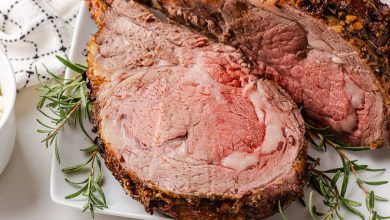Wild Rice (Raw) – Nutritional Information
Wild rice, known for its nutty flavor and chewy texture, is a highly nutritious whole grain, offering a great source of essential nutrients. This versatile ingredient can be used in a variety of dishes, from hearty soups to flavorful salads and casseroles. Below is the detailed nutritional profile of raw wild rice:
| Nutrient | Amount | % Daily Value (DV) |
|---|---|---|
| Energy | 357 kcal | 18% |
| Protein | 14.73 g | 29% |
| Total Fat | 1.08 g | 2% |
| Saturated Fat | 0.156 g | 1% |
| Carbohydrates | 74.9 g | 25% |
| Fiber | 6.2 g | 25% |
| Sugar | 2.5 g | – |
| Calcium | 21.0 mg | 2% |
| Iron | 1.96 mg | 11% |
| Magnesium | 177 mg | 44% |
| Phosphorus | 433 mg | 43% |
| Potassium | 427 mg | 12% |
| Sodium | 7.0 mg | 0% |
| Zinc | 5.96 mg | 38% |
| Copper | 0.524 mcg | 24% |
| Manganese | 1.329 mg | 66% |
| Selenium | 2.8 mcg | 5% |
| Vitamin C | 0.0 mg | 0% |
| Thiamin (Vitamin B1) | 0.115 mg | 10% |
| Riboflavin (Vitamin B2) | 0.262 mg | 20% |
| Niacin (Vitamin B3) | 6.733 mg | 42% |
| Vitamin B6 | 0.391 mg | 23% |
| Folate (Vitamin B9) | 95.0 mcg | 24% |
| Vitamin B12 | 0.0 mcg | 0% |
| Vitamin A | 1.0 mcg | 0% |
| Vitamin E | 0.82 mg | 5% |
| Vitamin D2 | 0.0 mcg | 0% |
Health Benefits and Dietary Preferences of Wild Rice
Health Benefits:
Wild rice is a nutrient-packed grain that provides a rich source of protein, fiber, and several essential minerals. Its high fiber content aids in digestion, promotes heart health, and helps manage blood sugar levels. The high levels of magnesium, phosphorus, and potassium contribute to the healthy functioning of muscles and bones. Wild rice is also rich in antioxidants, helping to combat oxidative stress and inflammation.
Dietary Preferences:
- Gluten-Free: Wild rice is naturally gluten-free, making it an excellent choice for those with gluten sensitivity or celiac disease.
- Plant-Based & Vegan: A fantastic protein source for plant-based diets, wild rice is perfect for vegans and vegetarians.
- Low in Saturated Fat: It’s a heart-healthy option due to its low saturated fat content.
Allergen Information:
Wild rice is free from common allergens like wheat, soy, and dairy. It is considered safe for most individuals, though anyone with specific grain sensitivities should consult their healthcare provider.
How to Incorporate Wild Rice into Your Meals:
- Soups and Stews: Add wild rice to soups and stews to enhance their texture and nutritional value.
- Salads: Toss cooked wild rice with fresh vegetables, nuts, and a vinaigrette for a wholesome salad.
- Casseroles and Side Dishes: Use wild rice as a base for baked dishes or as a side for proteins like chicken, fish, or tofu.
- Stuffed Vegetables: Wild rice makes an excellent stuffing for peppers, tomatoes, or squash.
Conclusion:
Wild rice is a versatile and nutrient-dense ingredient, packed with protein, fiber, and essential minerals. Whether you’re looking to enhance a savory dish or boost the nutritional value of your meals, wild rice is a healthy choice that complements a wide range of diets. With its low fat content and rich nutrient profile, it’s a great addition to any balanced meal. Try incorporating wild rice into your next recipe and experience its satisfying texture and health benefits.










